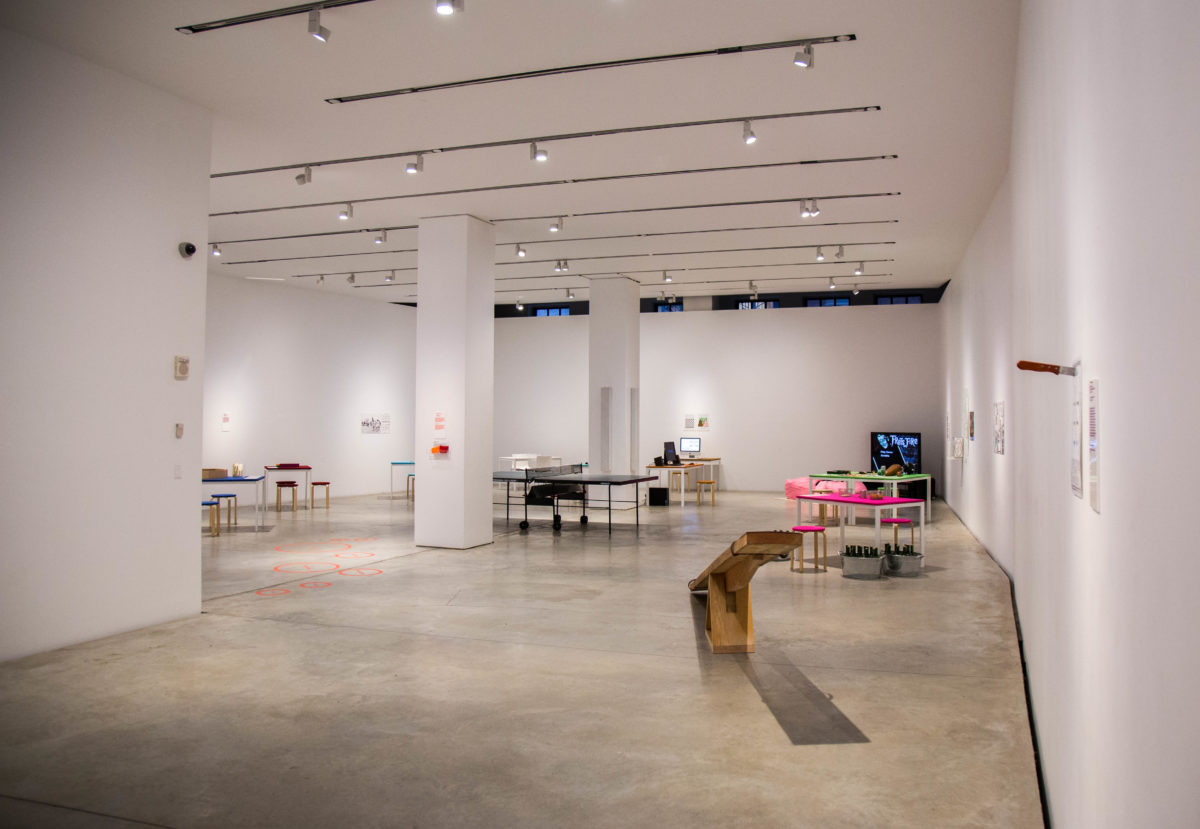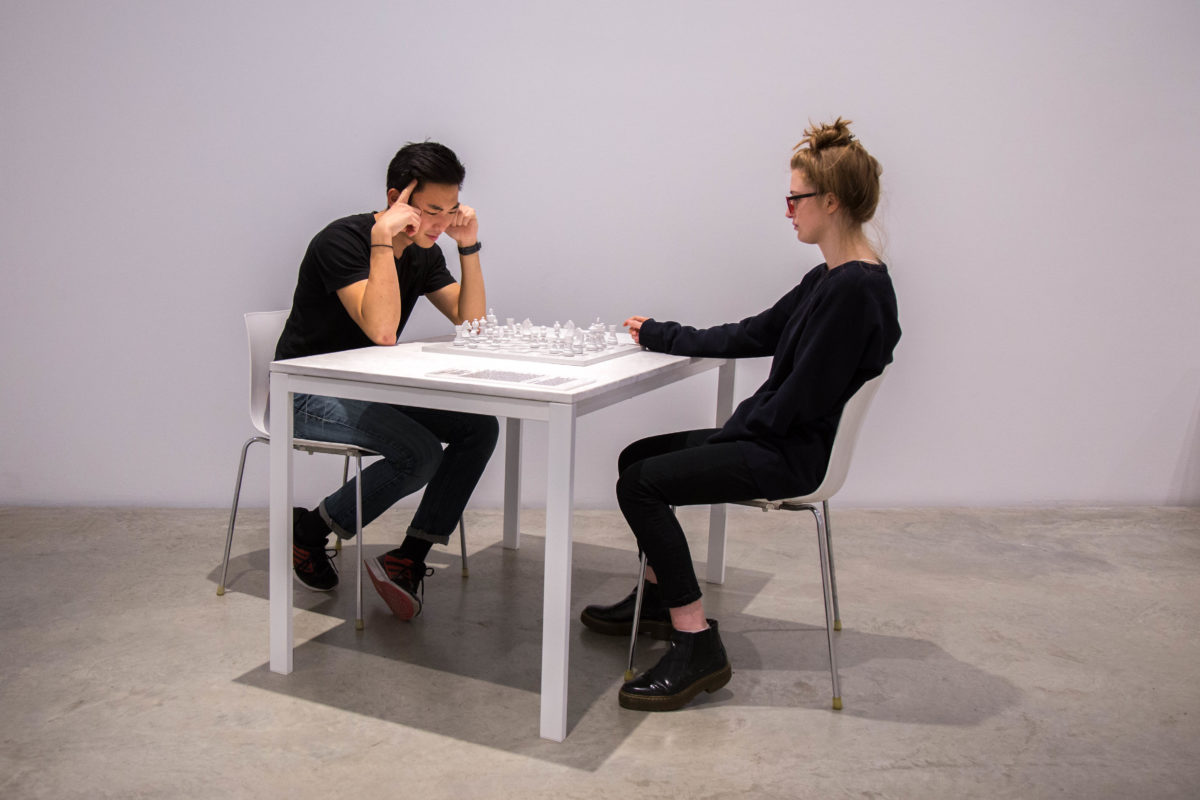Through the window of 2 W. 13th St. sits a large box filled with dirt. Further in the exhibition space is a see-saw, table tennis, multiple board games, computers, and televisions. However, unlike most exhibition pieces, these are meant to be interactive.
Push Play is an exhibit that explores the works of multiple artists who used games to discuss social, philosophical, and cultural issues in an effort to leave the user thinking about some specific issues. The use of games comes into play when the user has to use strategies to make the decisions to move forward in the game as well as the issue.
“I hope ‘Push Play’ will expand Parsons students’ view of artistic practice, make them more aware of artists’ engagement with socio-politics, and discover new artists whose work interests them,” said Melissa Feldman, curator of the exhibition. “I also hope they appreciate how artists adopt and combine many different skills and disciplines from textile and design to psychology.”
The pieces on display are of the following artists: Cory Arcangel, Mary Flanagan, Ryan Gander, Patrick Bernier, Olive Martin, Ruth Catlow, Futurefarmers, Jeanne van Heeswijk, Rolf Engelen, Paul Noble, Pedro Reyes, Jason Roher, David Shrigley, Erik Svedang and Yoko Ono.

The Anna-Maria and Stephen Kellen Gallery, where the Play Center is on display, is an exhibit space that shows the works of artists, not particularly the work of students are Parsons. “A lot of other Parsons students actually don’t like the space,” said second-year fashion design student Tiffany Piko, 19. “I’ve heard students mention that they were never interested in the content because they never knew what was inside.”
One of the pieces exhibited is called, “Your Parents, You, Your Wee Sister and Social Services.” It was created by David Shrigley in 2001 and plays as a typical game of table tennis. On the table sits two paddles, a larger one with “Social Services” written on both sides and a smaller paddle with “Your Parents” written on the other. There are two different sized ping-pong balls; the large one is labeled, “You” while the smaller one is labeled, “Your Sister.” The different sized paddles and balls also executed their meanings by differentiating in weight.
“I really liked how the table tennis game [Your Parents, You, Your Wee Sister and Social Services], intertwined together,” said Parsons Fashion Design major Andy Chan, 20. “I think that game was the best executed. It wasn’t so overly executed that the message was forgotten.“
“Draw the Line” is a piece by Jeanne van Heeswijk and Rolf Engelen made in 2000. The game is made up of a large platform that contains dirt. Player one draws a 3×5 meter territory that can be in any shape. Player two must throw a knife, that lands straight up in the soil, on the baseline of the territory to claim it. The game explores “the endless human struggle over territory.”
“I was surprised that the space wasn’t packed with people. I definitely felt that it had more weak games than strong ones. I wish the games were more interactive, less singular, and less strategic games.” Chan said, “ It would’ve been stronger with simple interactive games like the ping pong, the see saw. Those were simple enough, didn’t require us young folks to read much and had time to enjoy the game quickly.”

Other exhibition pieces take the player into making decisions on topics such as confession, freedom of governance, competitive tendencies when it comes to war, the transformation of human nature, and all the choices a human makes throughout their life.
“Artwork and museum and gallery shows have become more interactive in recent years. Visitors take part in the works as opposed to just standing there staring at them. Also the games in the show by and large have socio-political dimension or commentary as opposed to being just plain fun.” Feldman said.
Push Play is open through Dec. 13.
Photos by Don Eim







